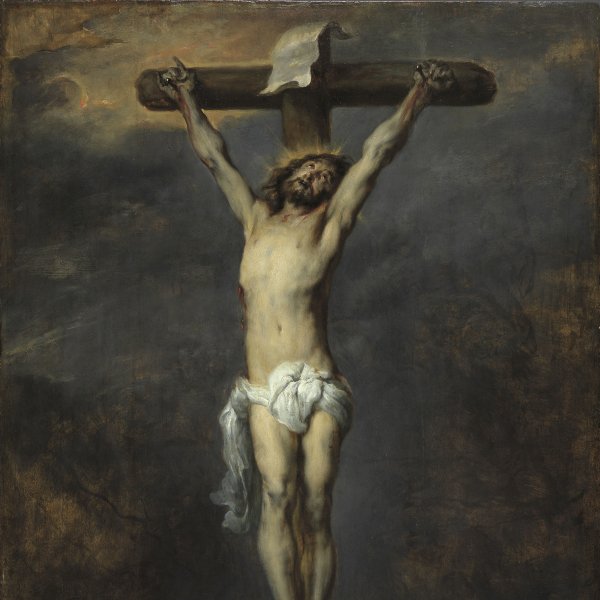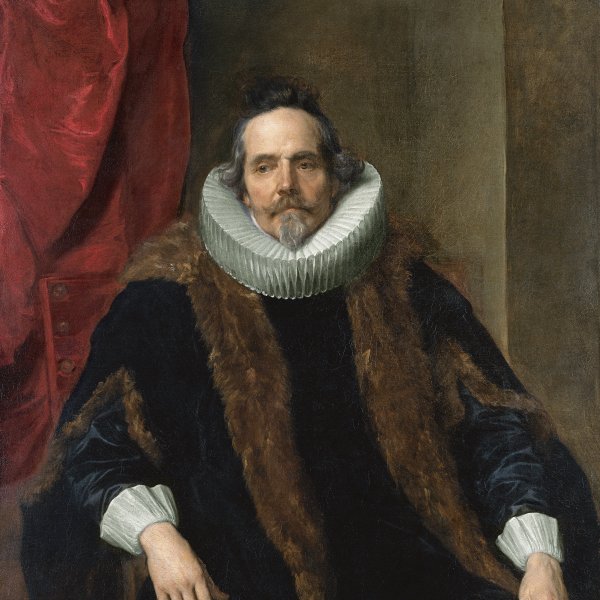Anthony van Dyck
Antwerp, 1599 -London, 1641
Son of a prosperous Antwerp merchant, Van Dyck was a painter of the generation following Rubens. He began his studies at the age of ten in the studio of Hendrick van Balen, where he is documented in 1609. Precociously talented, Van Dyck’s first known works date from 1613 when he was only fourteen and by 1618 he was registered in the painters’ guild in Antwerp as an independent master. Van Dyck was Rubens’ most gifted pupil and collaborator, a fact that would be of profound importance to the evolution of his work. From an early age Van Dyck venerated Venetian painting, particularly the works of Titian, an influence most clearly evident in his portraits. In 1620 he made his first trip to England where he worked for James I. Dating from before that trip are two important religious compositions: The Crowning with Thorns and The Taking of Christ (both Museo Nacional del Prado, Madrid). In 1621 Van Dyck made a trip to Italy, remaining there until 1627 when he returned to Antwerp. He visited Venice, Rome, Florence, Bologna and Genoa and his impressions and observations are recorded in his Italian Sketchbook now in the Devonshire Collection at Chatsworth House (UK). In a manner similar to Rubens, Van Dyck filled this notebook with everything that attracted his attention and interested him. Dating from the Italian period are the portraits of The Marchioness Elena Grimaldi and A Lady with her Son (National Gallery of Art, Washington), which are outstanding examples of his numerous Genoese portraits. In 1632 the artist returned to London where he worked for Charles I and where he lived until his death. During his second trip to England, Van Dyck made three trips to continental Europe: one in 1634 to the Low Countries, another in 1640 to Antwerp, and a third in 1641 to Paris. In October 1634 he was awarded the title of Dean honoris causa by the guild of Saint Luke in Antwerp, an honour only previously granted to Rubens. During Van Dyck’s time in England he focused almost exclusively on portraiture and the great demand for his work led him to establish a studio on the outskirts of London at Blackfriars. Examples of portraits from this period include Charles I on Horseback (National Gallery, London) and Charles I hunting (Musée du Louvre, Paris). Van Dyck was a key figure for the subsequent development of English portraiture.






